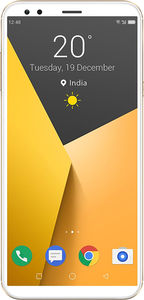InFocus Vision 3
+ Compare
Market Status: Out of Stock
★
3.8/5 14.1K Ratings
7.8/10 By Expert







View Gallery
Key Specifications
- ProcessorMediaTek Quad core
- Display5.7″ (14.48 cm) IPS LCD
- Rear Camera13+5 MP
- Front Camera8 MP
- RAM | Storage2 GB | 16 GB
- Battery4000 mAh
- NetworkDual SIM: 4G & 4G
- OSAndroid v7.0
View Full Specs
InFocus Vision 3 Prices
2 GB + 16 GB
Starting from ₹5,980
View All
Last Price
₹5,980
(Out of Stock)
3 GB + 32 GB
Starting from ₹5,980
View All
Last Price
₹5,980
(Out of Stock)
Mobiles ›
Infocus Mobile Phones ›
InFocus Vision 3
Updated On: Jul 27, 2024
Popular Mobile Price Lists
Popular Mobiles
- OPPO F27 Pro Plus
- Xiaomi Redmi Note 13
- OnePlus Nord CE 4 5G
- Samsung Galaxy S24 Ultra
- vivo V30
- vivo T3
- Motorola Edge 50 Pro 5G
- Samsung Galaxy M34
- vivo T2 Pro
- realme 12 Pro
- Samsung Galaxy A55 5G
- OnePlus 12R
- Samsung Galaxy S23 5G
- OPPO Reno12
- OnePlus 11R
- POCO M6 Pro 5G
- Infinix GT 20 Pro 5G
- OPPO A3 Pro
- Xiaomi Redmi 13C 5G
- Xiaomi Redmi 12 5G